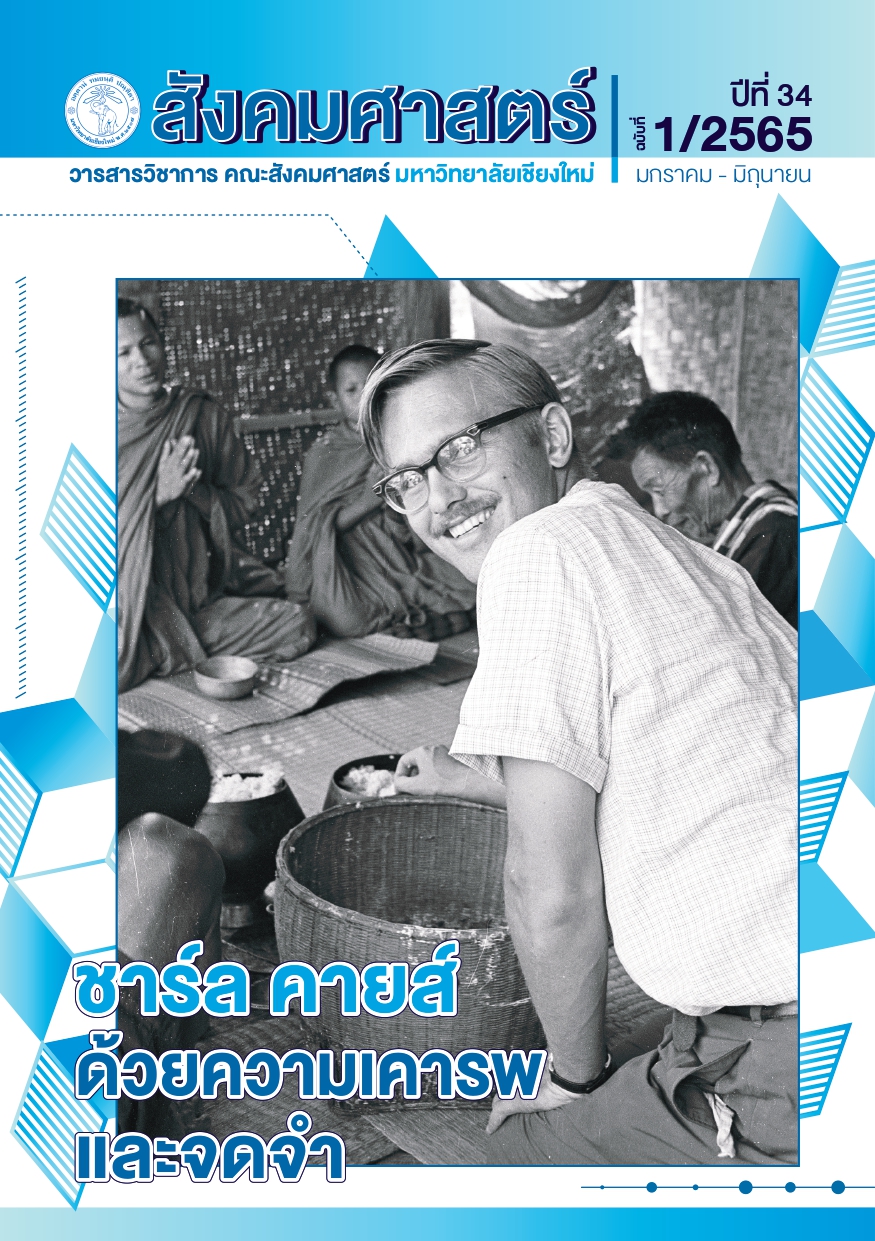Mon Identity: Social Practice for Self-identification of the Mon in Lamphun and Chiang Mai Provinces
Main Article Content
Abstract
This article presents the cultural phenomenon of the Mon ethnic group. on the issue of various Mon social practices for defining Mon people's identity through cultural expression of the Mon ethnic group, Nong Du Village and Bo Cow Village of Pa Sang District, Lamphun Province and Ton Tan Village and Nong Krop Village of San Pa Tong District, Chiang Mai Province
The researchers found that Mon peoples in those villages identified themselves base on memory of settlement that links to the histories of Queen Chammadhevi and Inta, the rich man, which combine the localness via storytelling of the settlement of history of Muang Lamphun or story about the Mon state in Burma. In addition to the memory set of migration, Mon villagers in the four villages (Bo Cow, Nong Du, Ton Tan, and Nong Krop) try to present Mon via traditions on Rice Bran, the Swan and the Flag Floating. Moreover, villagers in Tontan community present Monness via career, economic status, and society by doing fermented and fresh rice flour noodles for sale, while peoples in Ban Nong Du village make Kanom khao kuab, a kind of dessert.
We also found that Mon peoples used story or various memory sets to present Monness conforming to various contexts and social situations that they face, in order for adapting the power relations. In addition to the storytelling for presenting Mon identity, they also try to produce and resurrect Monness via cooking, costume, animism, or even reproduce rites which taking from Mon peoples in Central Thailand.
Article Details

This work is licensed under a Creative Commons Attribution-NonCommercial-NoDerivatives 4.0 International License.
All written articles published on Journal of Social Sciences is its author’s opinion which is not belonged to Faculty of Social Sciences, Chiang Mai University or is not in a responsibility of the journal’s editorial committee’s members.
References
สุริชัย หวันแก้ว .2535. สังคมและวัฒนธรรม. พิมพ์ครั้งที่ 3 กรุงเทพฯ: จุฬาลงกรณ์มหาวิทยาลัย.
ยศ สันตสมบัติ. 2544. มนุษย์กับวัฒนธรรม.กรุงเทพฯ: สำนักพิมพ์มหาวิทยาลัยธรรมศาสตร์.
ยศ สันตสมบัติ. 2548. “การทำความเข้าใจ “เพศสถานะ”และ “เพศวิถี”ในสังคมไทย”
ในเพศสถานะและเพศวิถีในสังคมไทย.กรุงเทพมหานคร: สำนักพิมพ์แห่งจุฬาลงกรณ์มหาวิทยาลัย.
ผ่องพันธ์ มณีรัตน์. 2521.การเปลี่ยนแปลงทางสังคมและวัฒนธรรม.กรุงเทพฯ : มหาวิทยาลัยธรรมศาสตร์.
ธนุพงษ์ ลมอ่อน. 2554. การสร้างพื้นที่ทางสังคมของชาวขมุในอำเภอเวียงแก่น ภายใต้บริบทของการเป็นชายขอบ. วิทยานิพนธ์ศิลปศาสตรมหาบัณฑิต การพัฒนาสังคม. บัณฑิตวิทยาลัย.มหาวิทยาลัยเชียงใหม่.
อานันท์ กาญจนพันธุ์. 2560. พื้นที่ความรู้ มานุษยวิทยา คนสามัญ 70 ปี อานันท์ กาญจนพันธ์. ภาควิชาสังคมวิทยาและมานุษยวิทยา คณะสังคมศาสตร์ มหาวิทยาลัยเชียงใหม่.
วินัย บุญลือ. 2545.“ทุนทางวัฒนธรรมและการช่วงชิงอำนาจเชิงสัญลักษณ์ของชุมชนชาวปกาเกอะญอ” เชียงใหม่.วิทยานิพนธ์ศิลปศาสตรมหาบัณฑิต สาขาวิชาการพัฒนาสังคม บัณฑิตวิทยาลัยมหาวิทยาลัยเชียงใหม่.
Hardgrove. 2006. Community and Public Culture: The Marwaris in Calcutta.
Columbia University Press
Hobsbawm, Eric and Terence Ranger. 1983. The Invention of Tradition. London:
Cambridge University Press.
Nora, Pierre. 1989. Between Memory and History : Les Lieux de Memoire. Representations, 26,
Special Issue : Memory and Counter-Memory (Spring),7-24.
Lefebrve, Henri. 1991. The Production of Space. Donald Nicholson-Smith trans. Oxford: Basil Blackwell. Originally published 1974.


